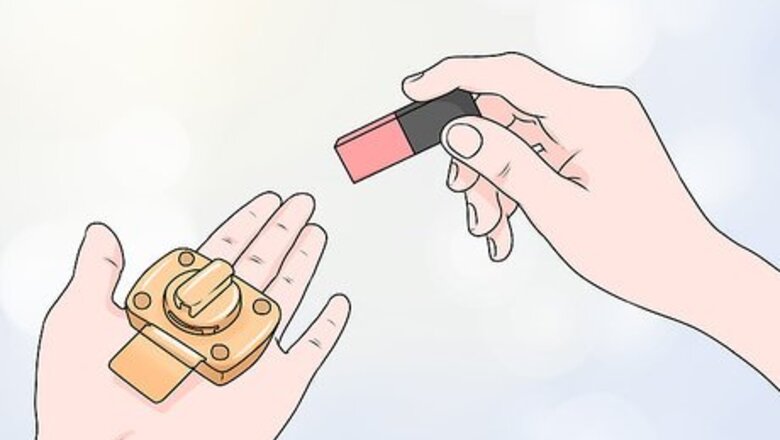
views
X
Expert Source
Alicia SokolowskiGreen Cleaning Specialist
Expert Interview. 15 September 2020.
Start by using soap and water. If your piece is lacquered, you shouldn't use anything else. If it's not lacquered, you can move on to slightly stronger chemicals, such as ammonia or a mild brass cleaner. You can also take steps to remove the lacquer if you prefer.
Cleaning with Soap and Water
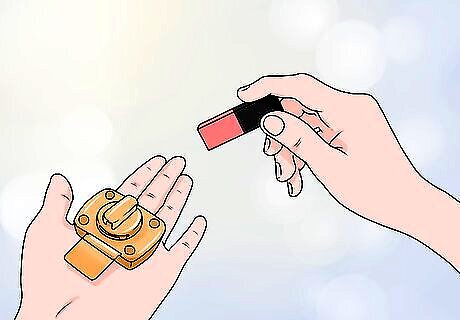
Check to see if the brass is solid. You'll want to clean brass-plated and solid brass items differently, so it's important to check first. The easiest way to check is to try to stick a magnet to it. Magnets won't stick to solid brass, but they will stick to brass-plated steel and other metals. If the brass is solid, you can follow some of the same general steps. However, solid brass can take slightly harsher chemicals, such as a strong brass cleaner, rather than just a mild one.

Look for lacquer. Brass-plated objects often have a thin coating of lacquer to help protect the brass. If the brass-plated item is lacquer-coated, you should stick to soap and water when cleaning it. Anything else will remove the lacquer. Unlacquered (not comparable) items will tarnish over time, while lacquered items won't. However, lacquered items may show tiny black spots, as the lacquer cracks. You can also test an inconspicuous place with a bit of brass cleaner. If it leaves a black spot on your rag, that means it's not lacquered. If it doesn't, it's likely lacquered, and you shouldn't clean it with anything harsh.

Wipe the object gently with soap and water. Using a soft rag, wipe the brass-plated item down gently with dishwashing soap and water. A microfiber cloth is ideal. You don't want to scrub too hard, as you can rub off the brass or lacquer.
Removing Tougher Grime on Items without Lacquer
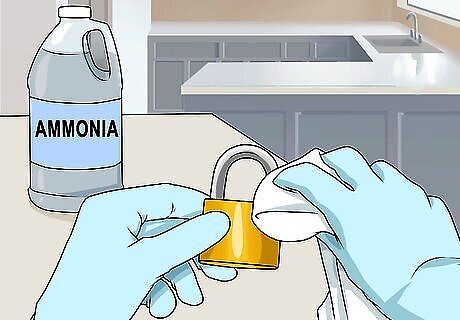
Try ammonia. Ammonia is gentle enough that it won't remove the brass-plating, but strong enough that it will remove much of the grime. Use a soft cloth to apply the ammonia to the brass. Rinse it off thoroughly.

Use a mild brass cleaner meant for brass-plate. Another option for heavier tarnish (once you've cleaned the item with soap and water, plus dried it) is a brass cleaner that is designed to be used on brass-plated items. Rub it in with a soft cloth, and wash it off with warm water. Test the cleaner first in a hidden area.
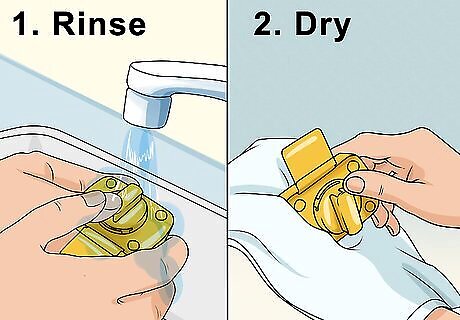
Always dry the item thoroughly. Once you've cleaned the item and rinsed off any excess cleaner, always take the time to dry it thoroughly. You don't want to leave it wet, so use a soft cloth to dry it off.
Caring for Plated Brass
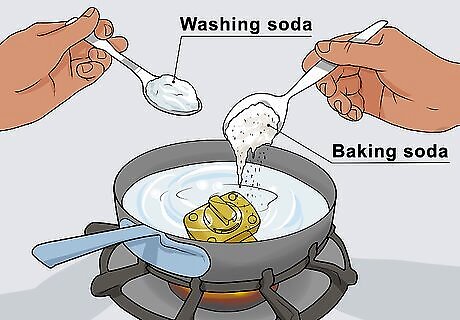
Take off lacquer by boiling. If your brass-plate is lacquer-coated, you may have reason to want to remove it. Cracking in the lacquer can lead to tarnishing on the surface beneath the coating. The best way to remove lacquer is through boiling. Place the item in a pot filled with the water. The pot should not be aluminum. Add a couple of spoonfuls of both washing soda and baking soda. Boil the item. You can either boil the item until the lacquer comes off, or you can heat it up enough that the brass expands, then let it cool. Once it cools, the lacquer should be easy to peel off, since it won't shrink back like the brass does while cooling.
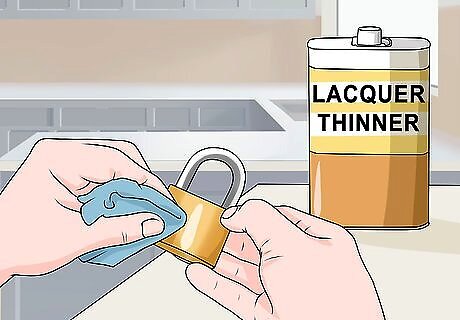
Remove lacquer with a lacquer thinner. Lacquer thinner will also remove the coating if you'd like to take it off your brass-plated item. Rub the thinner in. Keep rubbing until you see the lacquer coming off the brass.

Use oil to prevent tarnishing. If your brass-plated piece tarnishes easily, you can use oils to help prevent that. On a clean, dry item, rub in a little linseed oil or mineral oil. Use a soft cloth to prevent scratching, and only apply a thin coating.



















Comments
0 comment